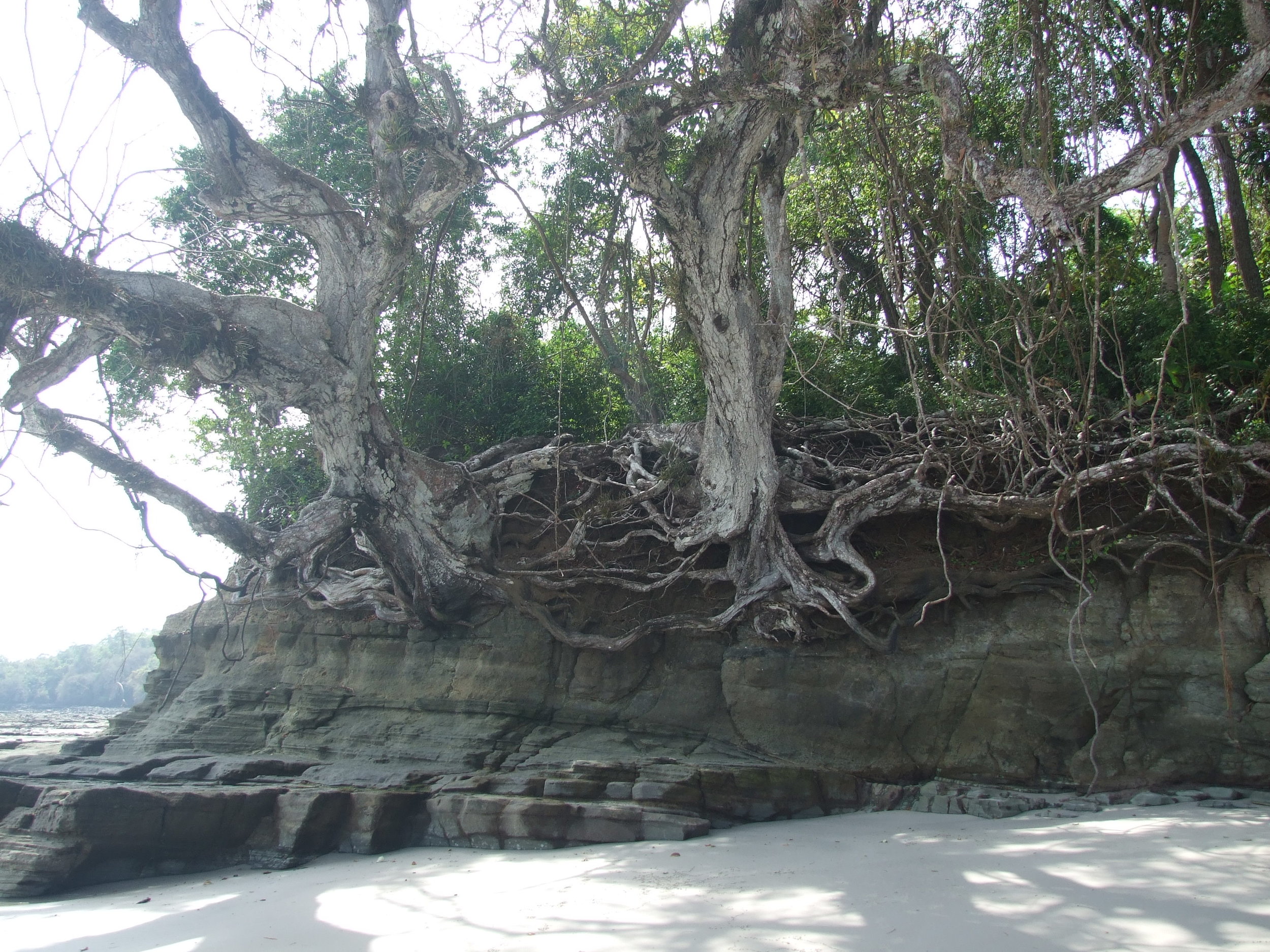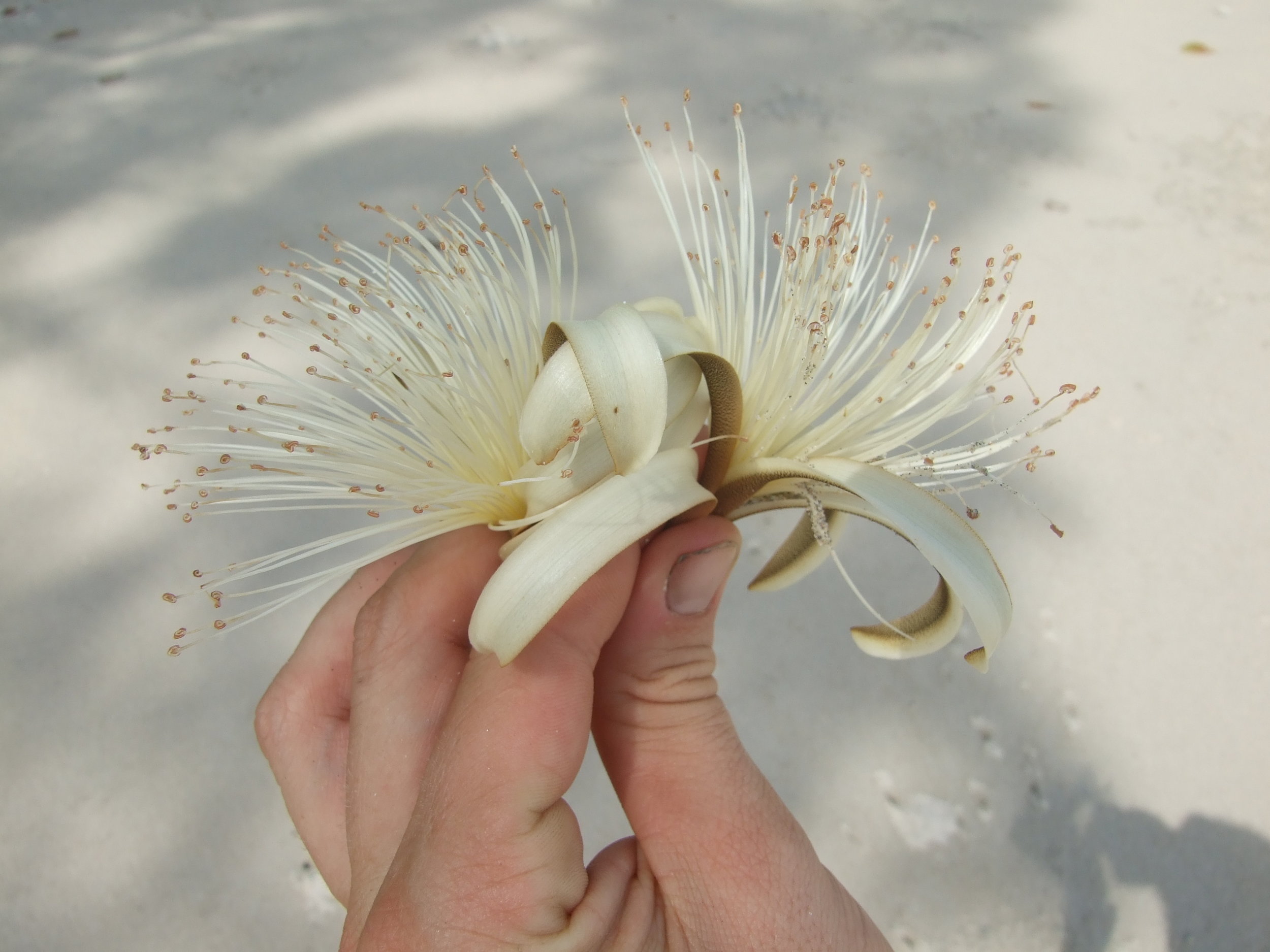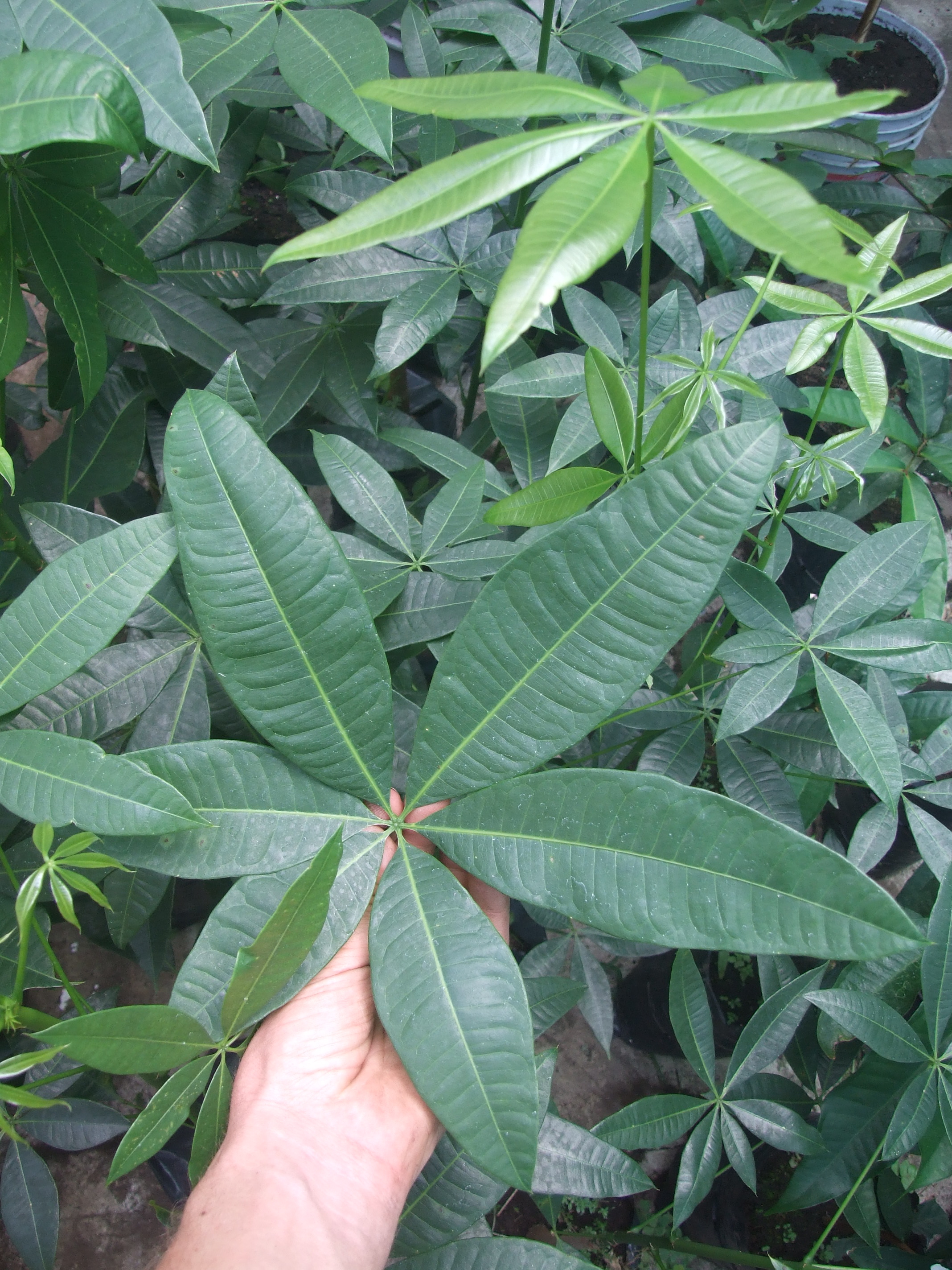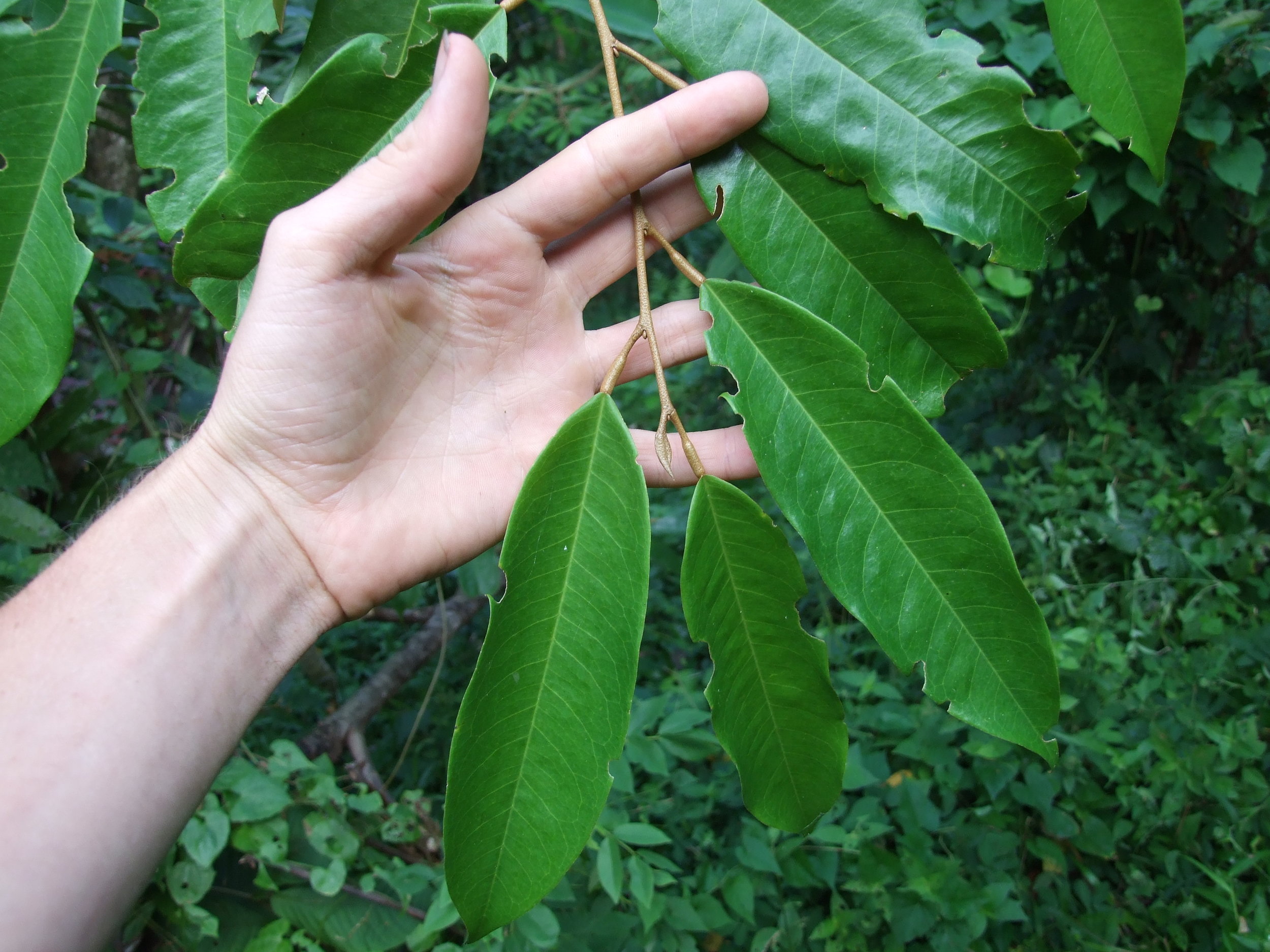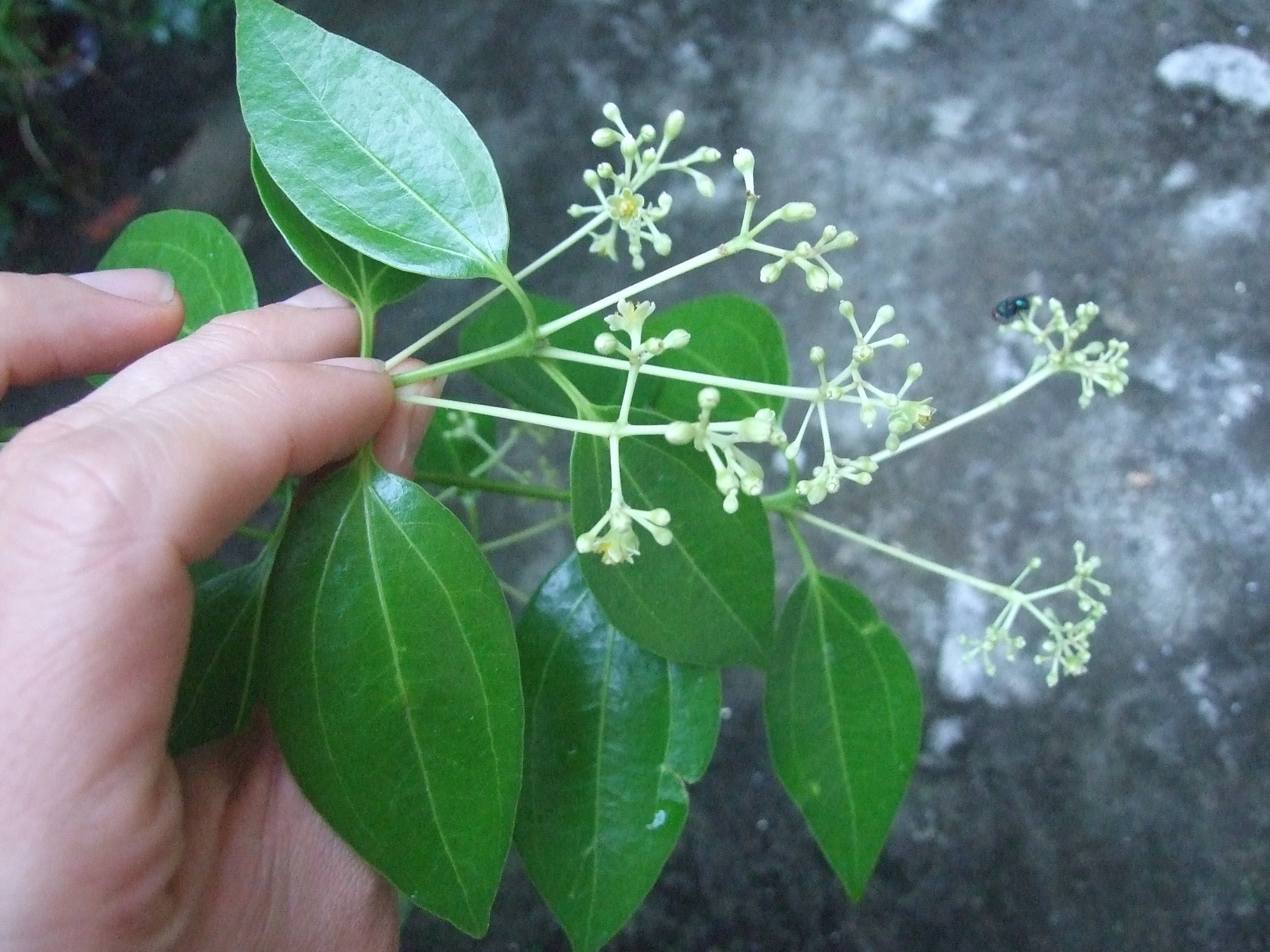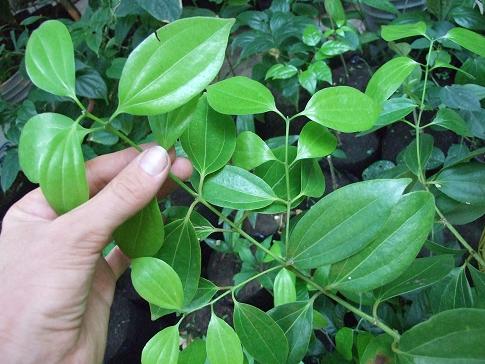I have about fifteen trees growing from seed I collected from a few trees I found planted along the street in a middle class neighborhood in San Jose, Costa Rica. In addition to this tree there were tropical olives (Simarouba glauca), citrus and macadamia nuts planted as street trees in the same neighborhood.
It is a small evergreen tree 4-6 m tall. The fruits are semi-woody capsules which stay green even when ripe. A pod contains many edible seeds which can be consumed raw or toasted/roasted/boiled. Considered to be one of the more notable underappreciated tropical food crops.
Like many of the Bombacaceae species P. Glabra has a very fat trunk to store water. Just after germination the girth of the trunk becomes noticeable, almost disproportional to the rest of the tree.
In Brazil the Saba nut is a fruit tree, cultivated as an ornamental in south-eastern areas of the country. It is not very frequent in its natural habitat, the pluvial Atlantic forests from Pernambuco to Rio de Janeiro and the flood plain forests of Para and Maranhao.
